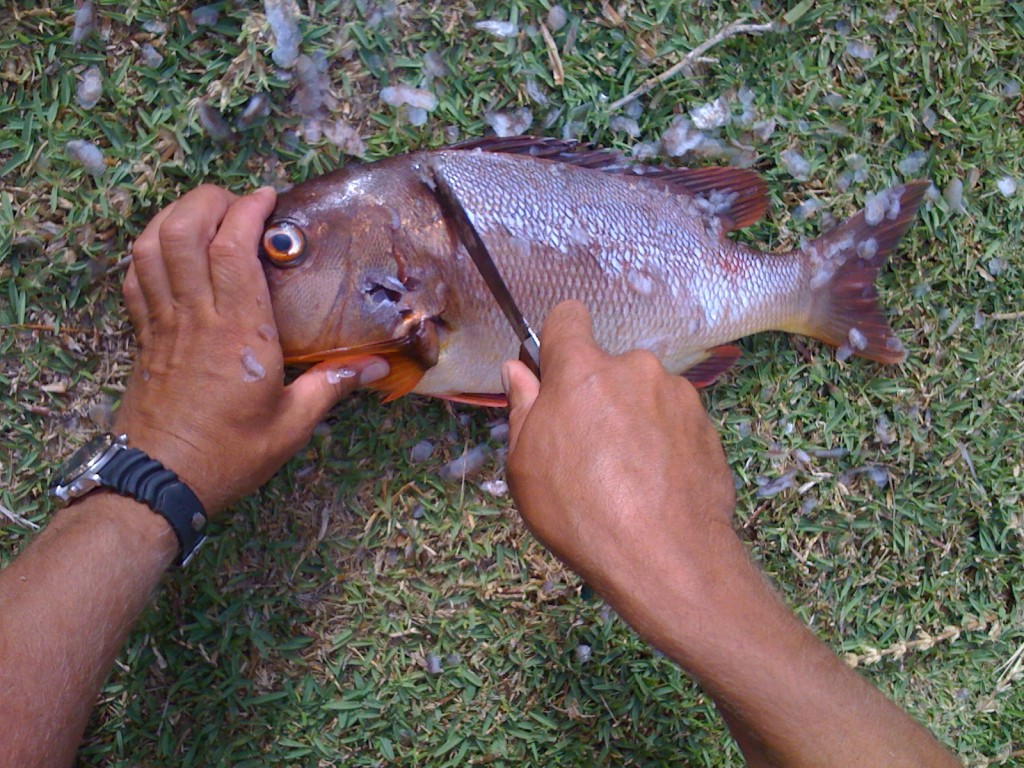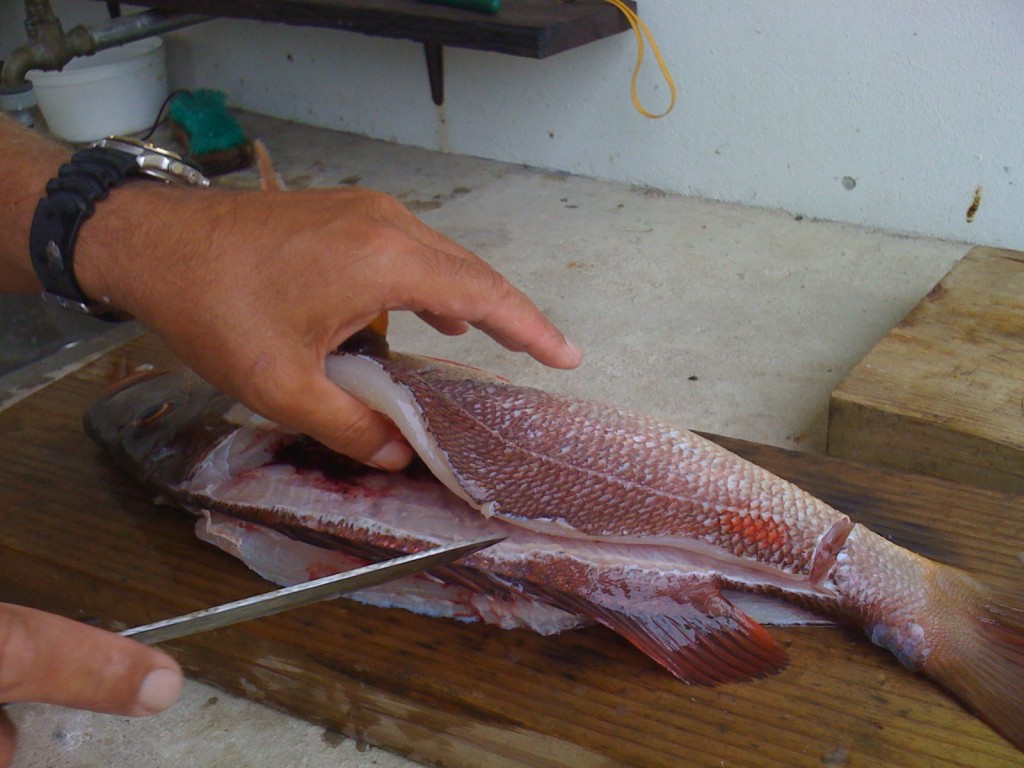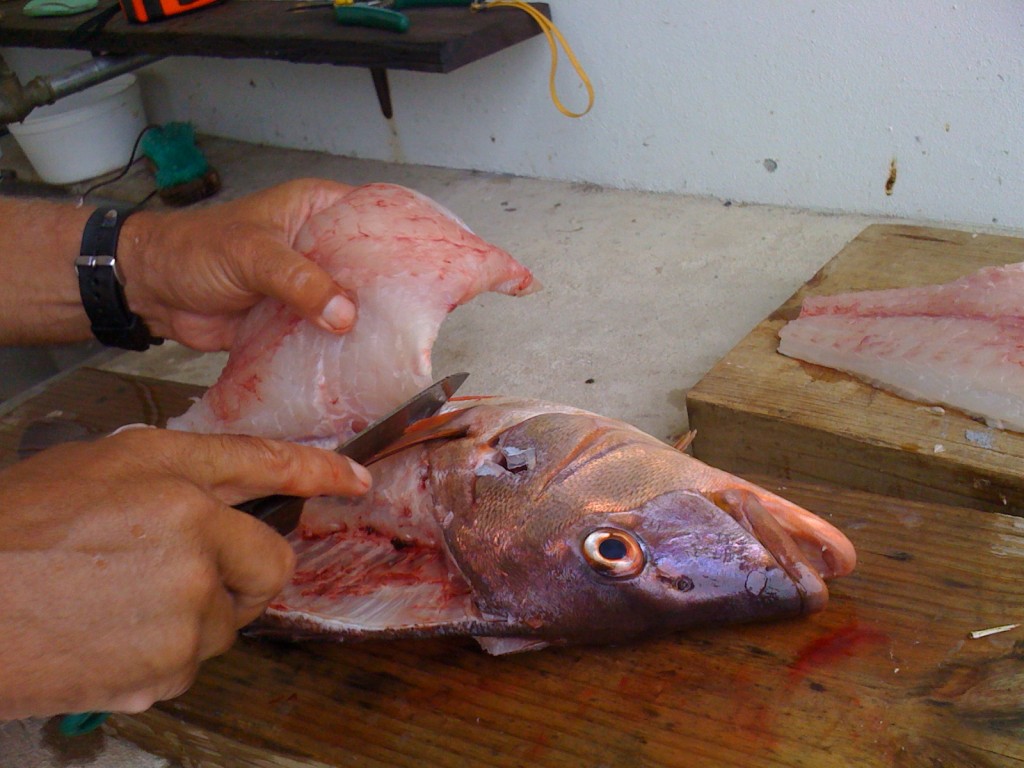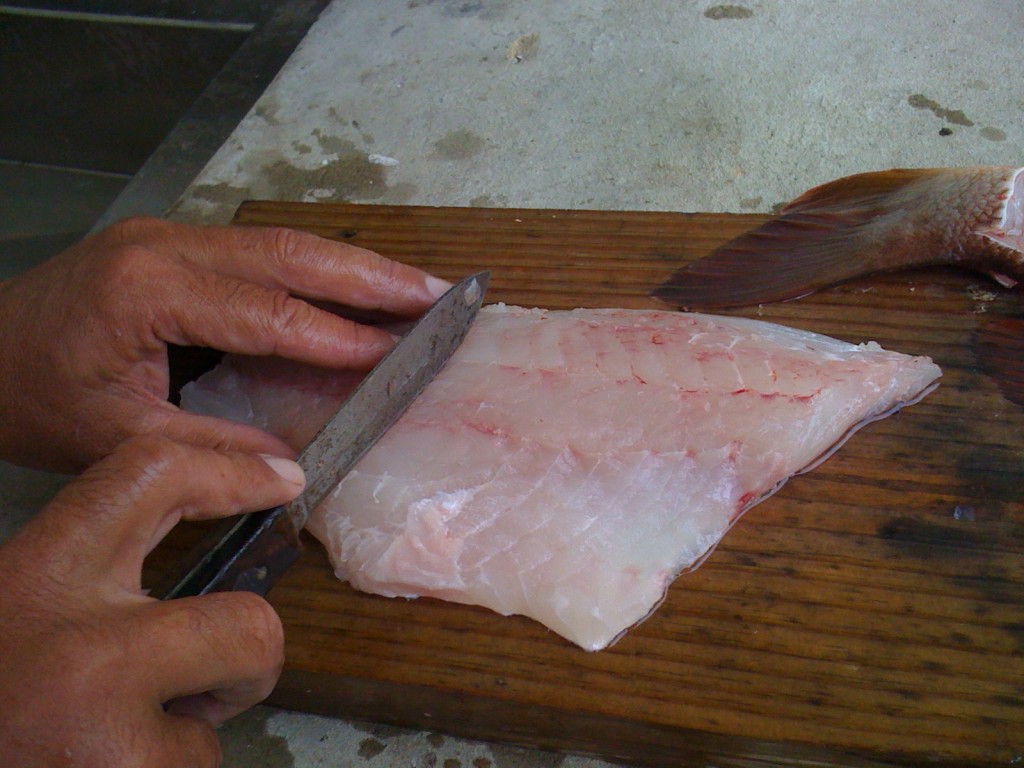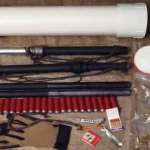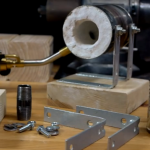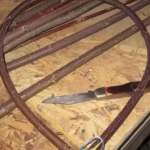Filleting most fish involves the same methodology and logic. Learning how to get the job done quickly and easily will help you to get the day’s catch into your belly faster while minimizing waste. While you can simply wrap the fish in foil or grill it as-is for a tasty meal, sometimes it’s just better and more practical to have nice cuts of flesh grilling away instead.
All you need is a good filleting knife, a protective glove and a flat surface to work with. However, you can also get the job done with a good survival knife as well. But, you will have a much easier time cutting the fish with a thin and sharp blade. Fish are surprisingly tough and resilient despite their soft and flexible appearance.
The first step is to hack off the head, just behind the gill line. This is where the meat meats the front of the fish. You don’t need to be exact when cutting, but eliminating the head and gills will make the rest of the job much easier. The next step is to make a diagonal cut facing down and towards where the head used to be from just behind the dorsal fin. The idea is to get behind and beneath the strong tissue that connects the fins to the flesh and remove them all in one swipe. Do this for to both sides of the fish.
Then, take your knife and gently but firmly cut along the side of the fish, from the front to the tail. This is easier said than done because you want to cut the fillet without also cutting off a lot of bones in the process. It will take some practice with different kinds of fish to get a sense of how deep you want to make the cut, and don’t worry if you cut too deep the first time. The meat will still be good to eat, but you will probably have to remove bone fragments along the way. You may also be able to judge how deep to make the cut by looking at the front of the fish, but this method doesn’t always work.
In any case, you want to make a single swipe from the front of the fish, tapering up just before reaching the tail. This requires a good deal of downward as well as lateral pressure as you make your way back. If you rush or are not careful, you will end up cutting off small chunks and inconsistent slices of meat that will be difficult to cook. This also takes some practice, but you will get the hang of it a lot sooner than you may think. The end result should be a nice fillet that is meaty with minimal bone fragments. All that should remain of the fish is some rib meat and the carcass.
The last thing that you should think about is whether or not you want to keep the skin on or off. This is a matter of preference. If you decide to remove the skin, place the fillet meat side down and gently cut off the skin by slowly pushing the blade from the front to the back of the fish. Make sure that you are holding down the fillet at the same time, otherwise it will slide everywhere while you are making the cut. This also takes a little bit of practice to get a feel for the process. But, filleting a fish is really this easy, and now the cuts are ready for the grill.




